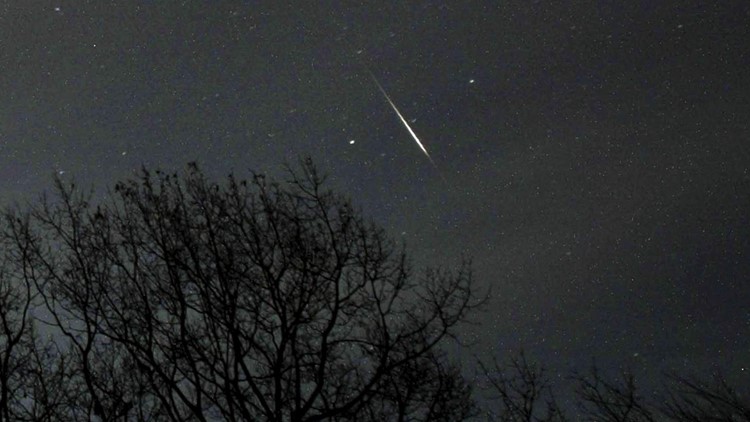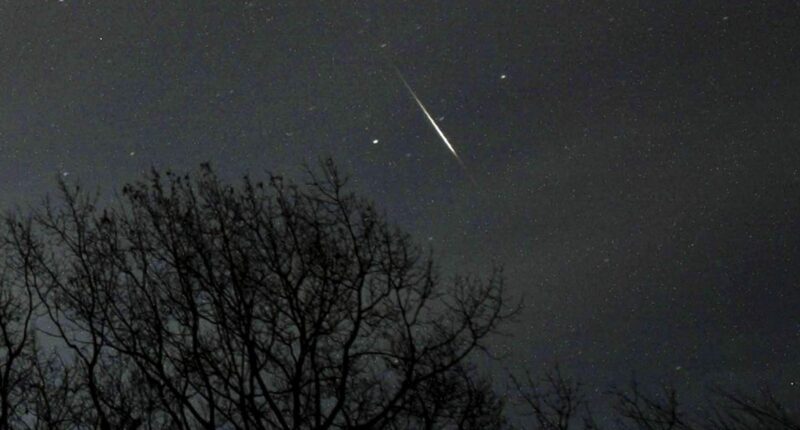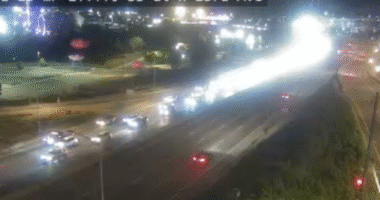
The meteor shower peaks Friday, and a waning crescent moon will mean good visibility under clear and dark conditions.
WASHINGTON — When the Quadrantid meteor shower peaks on Friday, it will be the year’s first chance to see fireballs in the sky.
A waning crescent moon means good visibility under clear and dark conditions.
Most meteor showers derive their names from the constellations that they seem to originate from in the night sky. However, the Quadrantids are an exception to this rule as they are named after a constellation that no longer exists, as pointed out by NASA’s William Cooke.
Unlike other meteor showers, the Quadrantids typically do not have long tails, but their heads can manifest as bright fireballs. NASA states that the peak of this meteor shower can reveal up to 120 meteors per hour.
Viewing lasts until Jan. 16. Here’s what to know about the Quadrantids and other meteor showers.
What is a meteor shower?
Throughout the year, as the Earth revolves around the sun, it repeatedly crosses paths with debris left behind by comets and occasionally asteroids. The Quadrantids shower originates from debris associated with the asteroid 2003 EH1.
When these fast-moving space rocks enter Earth’s atmosphere, the debris encounters new resistance from the air and becomes very hot, eventually burning up.
Sometimes the surrounding air glows briefly, leaving behind a fiery tail — the end of a “shooting star.”
You don’t need special equipment to see the various meteor showers that flash across annually, just a spot away from city lights.
How to view a meteor shower
The best time to watch a meteor shower is in the early predawn hours, when the moon is low in the sky.
Competing sources of light — such as a bright moon or artificial glow — are the main obstacles to a clear view of meteors. Cloudless nights when the moon wanes smallest are optimal viewing opportunities.
And keep looking up, not down. Your eyes will be better adapted to spot shooting stars if you aren’t checking your phone.
The Quadrantids will peak on a night with a slim crescent moon, just 11% full.
When is the next meteor shower?
The next meteor shower, the Lyrids, will peak in mid-April.
The Associated Press Health and Science Department receives support from the Howard Hughes Medical Institute’s Science and Educational Media Group. The AP is solely responsible for all content.

















